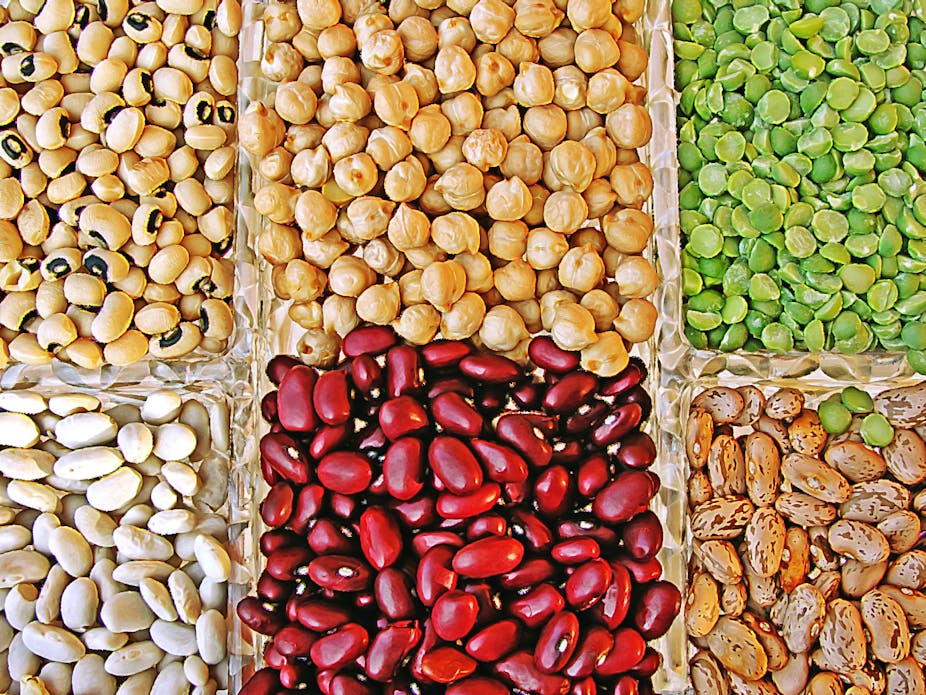A typical west African menu is not complete without a fermented food or drink. These are foods that have been transformed by natural processes involving “friendly” microorganisms like bacteria or yeast. The microorganisms break down the sugars and other substances in the food, which changes the taste and texture, and sometimes even preserves the food.
Some examples of fermented foods from the region are those made from African locust beans, such as iru (Nigeria), dawadawa (Ghana), netetu (Senegal) and afitin (Benin). Other products include okpehe (Nigeria), soydawadawa (Ghana), ogiri (east Nigeria), and Burkina Faso’s bikalga and soumbala.
Fermented foods are rich in protein, dietary fibre, and essential minerals such as iron, calcium, and potassium. Although many of these foods are used as condiments, they also serve as low-cost meat substitutes due to their high protein content and taste.
The alkalinity of these fermented foods helps preserve them, because microorganisms (which cause food to spoil) don’t grow so easily in alkaline substances.
However, there are safety concerns with some of these foods. Risks can arise in the way they are prepared and the quality of the fermentation process.
As a microbiologist, I’ve studied west African alkaline fermented foods and highlighted some safety issues they present. I’ve also suggested ways to make these foods safer.
Food safety risks
Iru (African locust beans) and other legume-based products provide essential amino acids and are a rich source of protein and fibre. Dawadawa contains antioxidants that help protect cells from oxidative damage (cell damage caused by stress).
But one safety concern is the contamination risk from mycotoxins and bacteria related to poor hygiene. Mycotoxins are toxic substances produced by certain moulds that can contaminate crops during growth, harvest, storage or processing.
Mycotoxins are capable of causing diseases or even death in humans and other animals. The adverse health effects of mycotoxins range from acute poisoning to long-term effects such as immune deficiency and cancer. Heavy exposure to aflatoxin, a type of mycotoxin, causes liver damage, jaundice, haemorrhage and oedema. Lower exposure to aflatoxin over a long time may cause immunosuppression and cancer.
Unregulated traditional practices, which may involve unhygienic utensils and handling, can pose a threat to food safety by introducing bacteria that can survive alkaline conditions.
Read more: How does food get contaminated? The unsafe habits that kill more than 400,000 people a year
Also, fermented food products often use salt as a preservative. Consuming too much salt may adversely affect health and worsen conditions like cardiovascular diseases and stroke.
So, to minimise the safety risks of fermented foods, it is important to reduce the amount of salt and to store foods properly. Inspect grains and seeds, and discard any that look mouldy, discoloured, or shrivelled. Avoid damage to grains before and during drying, and in storage.
Food safety requires action and cooperation in five areas: agriculture, food technology, nutrition, microbiology, and regulations.
Five approaches to safer fermented foods
Agriculture
The quality and safety of fermented foods lies in the quality of the “substrate” it’s made from, such as legumes. Starting a fermentation process with low quality substrates creates a high risk of introducing potentially pathogenic bacteria and fungi, or toxins produced by them. Seeds and other agricultural produce used must be of high quality and certified safe for human consumption.
Food technology
Safe alkaline fermentation requires careful control of production conditions. Inadequate fermentation time and sub-optimal temperature may not produce the enzymes that kill pathogens and prevent toxins.
Nutrition
Generally, very little research has been done on the nutritional composition of fermented products. There’s a need for more data on this. Studies should explore what influences the nutritional content of the products, such as soil characteristics, climate and the state of maturity at harvest. Data should be collected and analysed throughout the process, from the farm to processing and consumption stages. A robust measure of nutrient composition would help to formulate recommendations on daily intakes.
Microbiology
The safety of the particular strains of organisms used in fermentation needs more investigation. Molecular and genomics tools could be used to identify the enzyme producing species and strains in these fermented foods.
Regulation
Food regulations, policies and monitoring are needed in west African countries to overcome local challenges. Among various interventions, food handlers should be educated by food safety bodies on essential microbiology, hygiene and sanitation as it concerns their products. Monitoring of compliance during production, packaging and storage in the market is essential.
The culinary traditions of west Africa offer a treasure trove of flavours and experiences. Alkaline fermented foods, with their distinctive tastes, textures and aromas, also offer potential health benefits. With high-quality substrates, appropriate starter cultures, the right hygiene practices, optimal pH and temperature in production, and proper storage and packaging, consumers can enjoy the region’s fermented delicacies with confidence.

